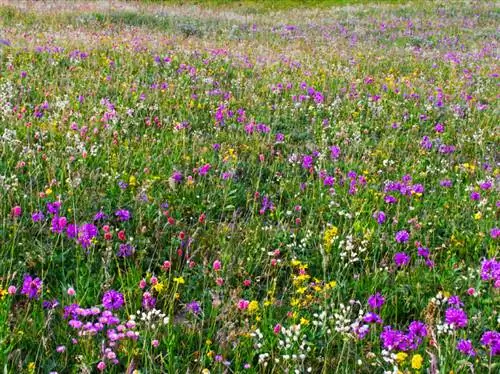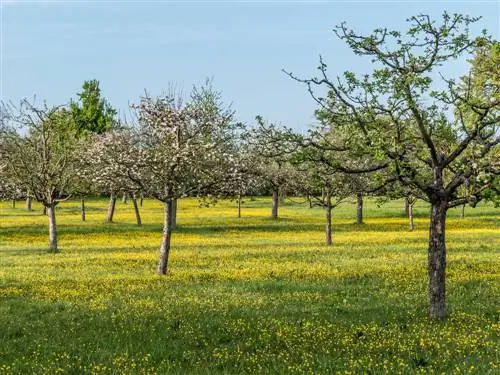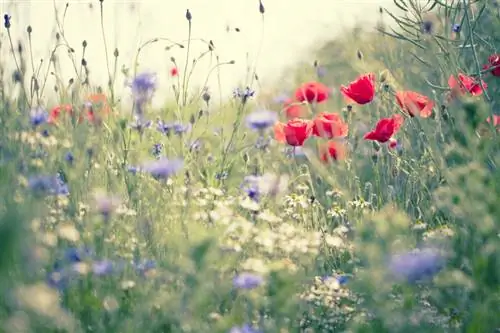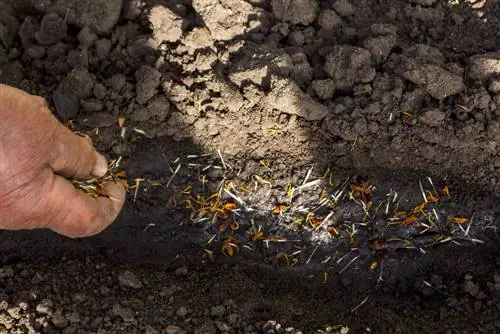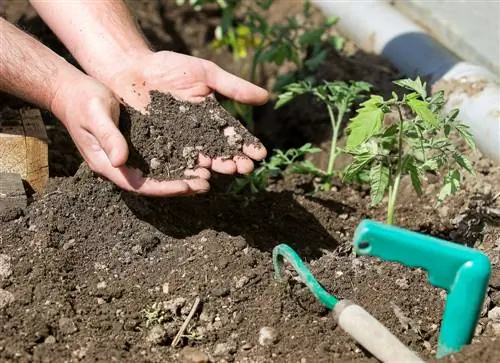- Author admin [email protected].
- Public 2023-12-16 16:46.
- Last modified 2025-01-23 11:20.
Many garden owners have already created a wild meadow in their garden and enjoyed the numerous, colorful flowers - only to be disappointed to discover a year or two later that the flowers have almost completely disappeared. Whether you are actually successful in creating a wildflower meadow depends primarily on the choice of seeds.
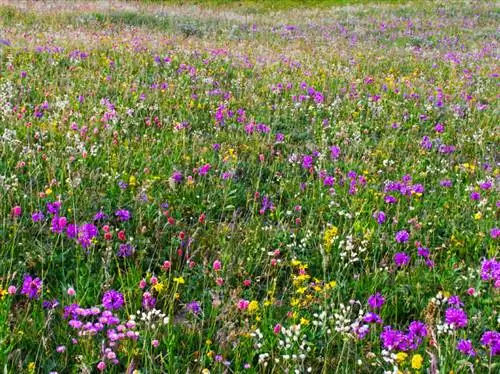
Which seeds are suitable for a wildflower meadow?
For a successful wildflower meadow, the seeds should consist of native, site-appropriate meadow plants. Avoid cheap mixes from garden centers and prefer high-quality seed mixes from country stores or agricultural shops or collect the seeds yourself in your region.
Cheap mixtures are unsuitable
Good, promising seeds consist of meadow plants that are native to your region and are suitable for the location. These are largely perennial. In garden centers, however, you can purchase cheap mixtures that are, however, unsuitable for creating a wildflower meadow. These seed mixtures do not contain any explicit meadow flowers, but mostly annual field wildflowers such as cornflowers or corn poppies - they look beautiful, but quickly disappear again.
Collect wildflower seeds yourself
Instead of these, you can buy high-quality seed mixtures from the country trade or agricultural shop, which are made specifically for farmers with hay meadows. However, these are often mixtures for fat meadows. On the other hand, it is much more fun to collect flower seeds yourself - the main advantage of this is that you are sure to collect the right plants. However, make sure to choose the right plants for your soil - wet meadow flowers will not feel comfortable in dry meadows. The seeds are collected on a dry day, dried at home on newspaper or kitchen paper for a few days and then stored in a paper bag (e.g. greaseproof paper) or a matchbox - but never in a plastic container.
Hay mulching as a method of propagation
A simpler way of propagation is so-called hay mulching or transferring the cuttings. When the seeds are ripening, mow fresh hay on the surrounding, flower-rich wild meadows and spread it in a thick layer on the recipient area prepared for sowing. The ripe seeds fall out of the hay and seed the soil all by themselves.
Meadow flowers are light germinators
The seeds, whether purchased or collected yourself, must not be covered with soil. After all, most meadow plants germinate in light and should therefore only be pressed onto the prepared and finely crumbled soil using a roller or similar. The seeds, which are usually very fine, should be mixed with a spreading aid (e.g. sand or sawdust). This measure makes it easier to distribute the seeds evenly.
Tips & Tricks
Oat meadows are particularly interesting, as they look attractive even after the main flowering period in June. Flowers such as yarrow, meadow sage, meadow knapweed and scabios thrive here. In addition, this type of meadow often blooms a second time in late summer.

